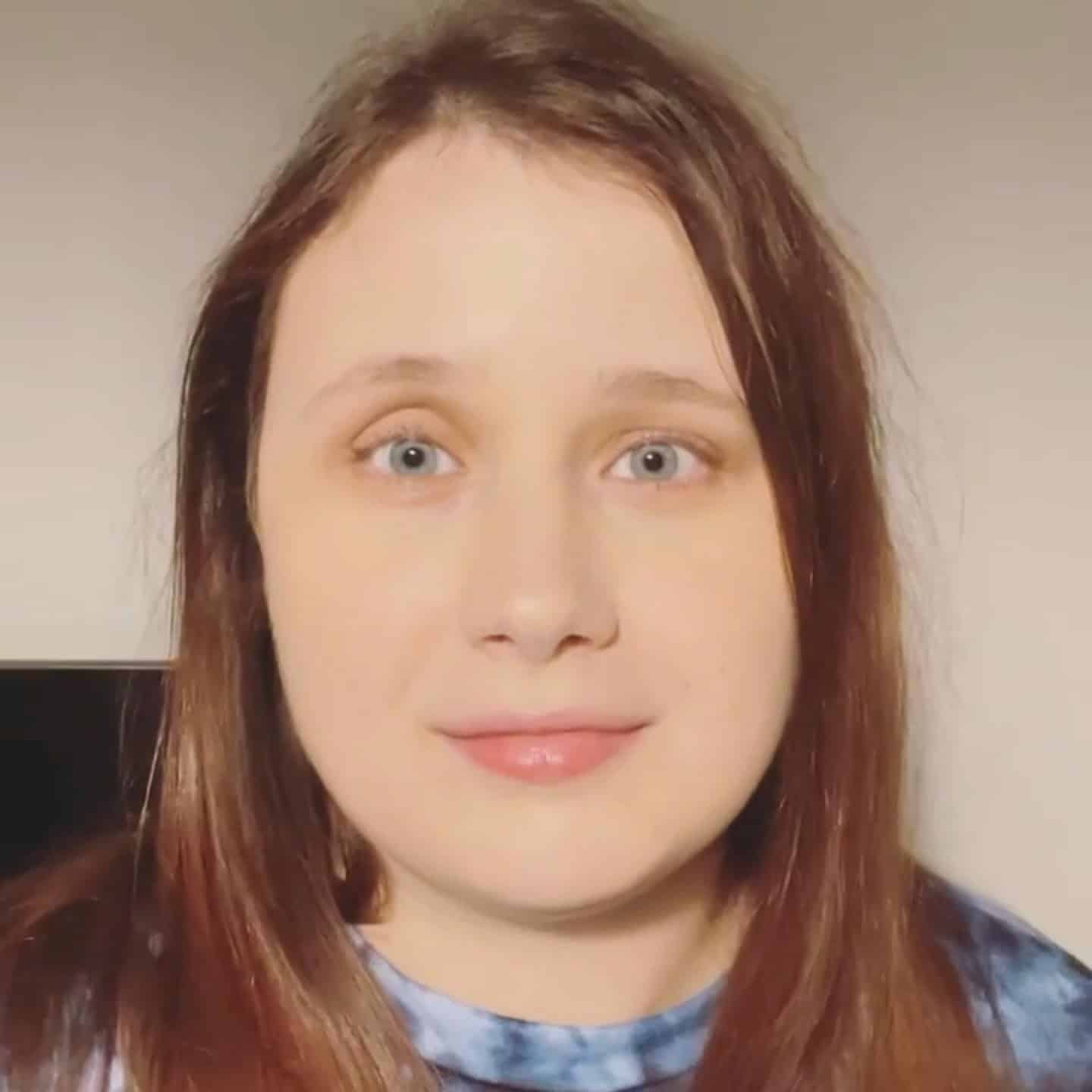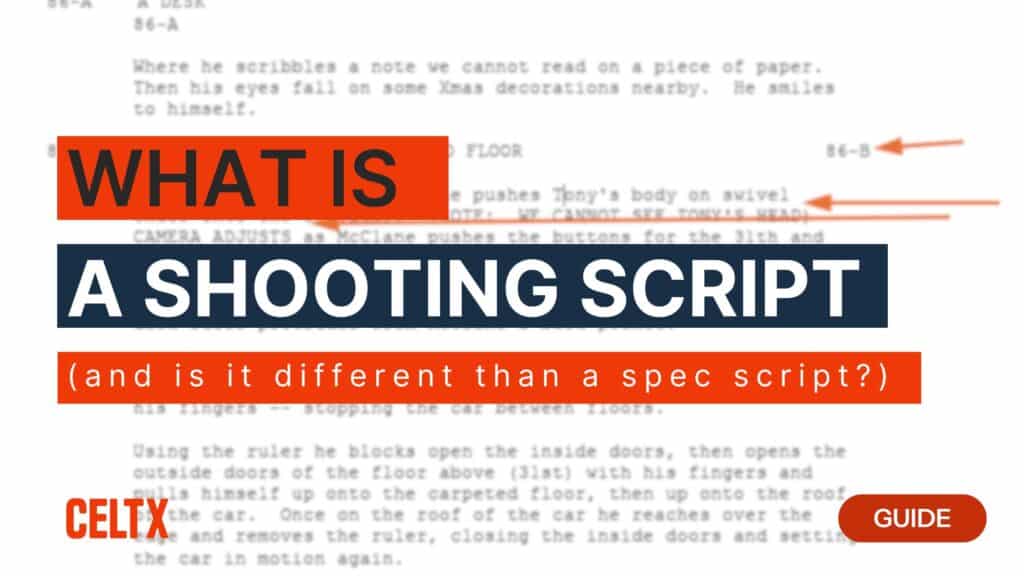
If you’re a screenwriter, you may already know that the screenplay is the core of all filmmaking. It’s here where we bring the story, characters, and structure to life before a single frame is shot.
You may also already know that not all screenplays are created equal or have the same function.
The two most commonly referenced script types are the spec script and the shooting script. Yes, they may look similar, but in practice they are used for very different purposes and have their own structures.
As screenwriters and filmmakers, it’s crucial that we know the difference, which is what today’s blog is all about. So, strap in as we explore what a shooting script is, how it differs from a spec script, and of course we’ll throw in some real-world examples!
Ready? Let’s go!
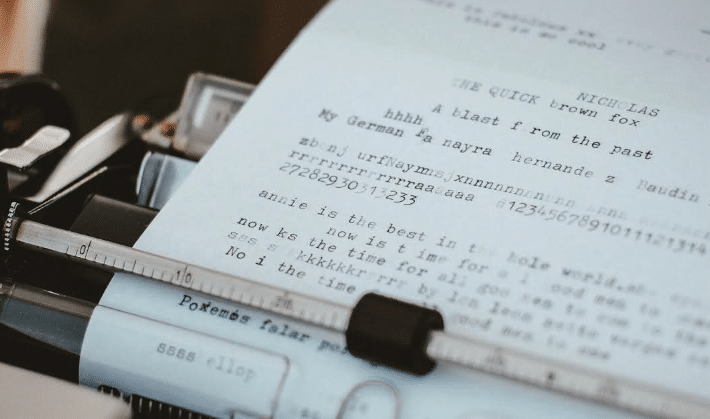
What is a Shooting Script?
A shooting script is the finalized version of a screenplay that’s used during production.
It’s not just a story document but a technical blueprint for the production team with everything they need to bring the story to life: scene numbers, camera directions, shot types, editing cues, and detailed revisions.
Key Features of a Shooting Script
So, what does the shooting script include? Let’s take a look:
- Scene numbers for scheduling and reference
- Camera and editing directions such as CLOSE ON, DISSOLVE TO, and TRACKING SHOT
- Sluglines that contain additional details (like DAY 2 of shooting)
- Dialogue formatting that may include notes for actors or technical staff
- Revisions tracked with color-coded pages and dates (e.g. Pink Revision – March 3rd)
Essentially, the shooting script is the version of the script the director, cinematographer, assistant directors, and other departments will use to coordinate every shot and scene during the shoot.
Spec vs. Shooting Script
While both spec and shooting scripts are screenplays, they have different objectives and audiences. This distinction is so important to understand because if you submit the wrong type of script in the wrong context, it can result in your script being tossed aside.
Okay, so maybe we should actually explain what a spec script is…
What is a Spec Script?
A spec script (short for speculative script) is a screenplay written on speculation, meaning that no one has paid for it yet. Writers will create spec scripts to showcase their storytelling ability sometimes with a view to sell it to a studio, producer or production company.
A spec script focuses purely on storytelling, character development, dialogue and emotional beats, avoiding technical instructions, camera work, and anything that could ‘direct the director’.
Let’s compare the spec and shooting scripts side by side.
| Element | Spec Script | Shooting Script |
| Purpose | Sell story/showcase writing ability | Guide production |
| Scene numbers | ||
| Camera Directions | ||
| Editing Transitions | ||
| Readers | Agents, managers, producers | Director, Assistant Director, Director of Photography |
| Style | Focused on prose and flow | Practical, segmented, utilitarian |
| Revisions | Color-coded, dated revisions |
If spec and shooting scripts could talk, here’s what they’d say:
- Spec: “Here’s a great story! You should buy it!”
- Shooting: “Here’s exactly how we’re going to film this great story!”
Learn more about spec scripts here.
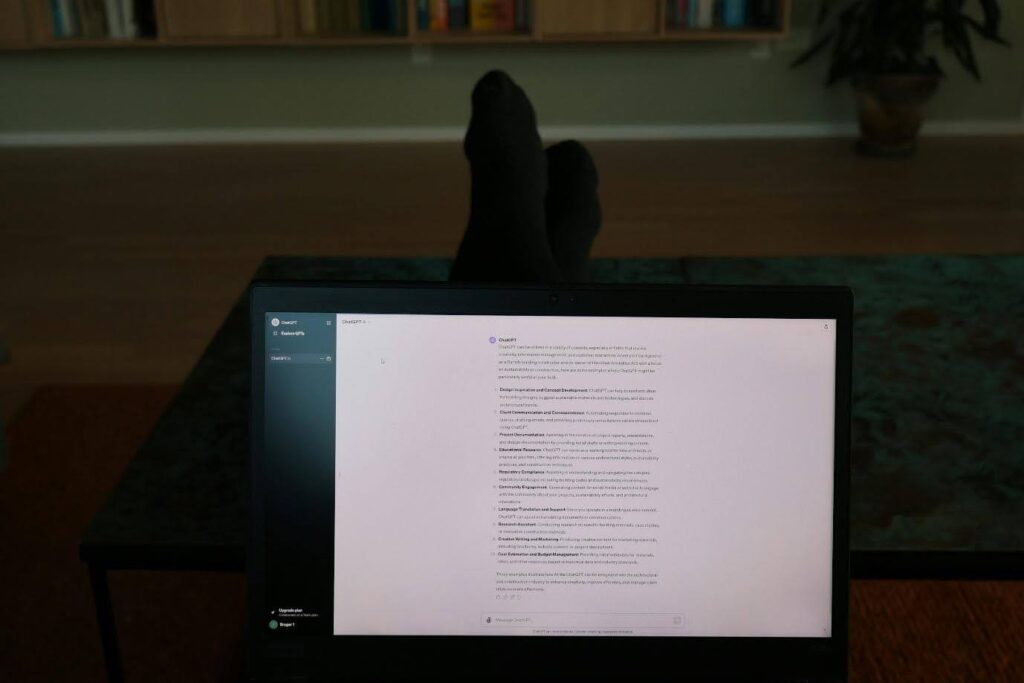
Spec vs. Shooting Script | Formatting 101
As we’ve discussed, formatting is one of the critical differences between spec and shooting scripts. Even the most experienced of screenwriters can stumble if they try to format one like the other.
Let’s take a closer look at some of the formatting differences:
1. Scene Numbers
In a spec script, scene numbers are usually omitted to avoid disrupting the reading experience. Remember, the spec script is all about story.
Whereas for a shooting script, scene numbers are included and locked, typically aligned on the left or right hand side of the page. In this instance, scene numbers help everyone on the crew identify when and where things are happening during production.
Scene numbers in shooting scripts are also sequential, but when insertions or rewrites are made after numbering has been finalized, letters are used to avoid renumbering the entire script. For example:
Scene 20 – Original Scene
Scene 20A – A newly added scene between 20 and 21
Scene 21 – Next scene after the insertion
This prevents a cascade of re-labeling, which would confuse everyone working from different versions of the script.
2. Technical Direction
Spec scripts will avoid directing the camera or actors. For example, CLOSE UP, DOLLY IN and CAMERA TRACKS are a big no-no, again, to avoid distracting from the story itself.
Meanwhile, shooting scripts will include shot types, camera angles and movement. For example:
CLOSE ON: DOROTHY’S EYES as she narrows them.
DOLLY BACK TO REVEAL: The knife in her hand.
Notes like these in a shooting script help departments coordinate the physical setup of each shot.
3. Transitions
Transitions will either be minimal or non-existent in a spec script with editors and directors determining these later on.
Shooting scripts will include transitions like CUT TO, FADE IN and DISSOLVE TO, to guide post-production.

4. Revisions
While you should perform edits and revisions on your spec scripts, these won’t be visible to the reader in the sense of formal revisions.
However, revision sets should be visible on a shooting script which has a complex revision system. Each set of changes is assigned a color (e.g. red, pink, blue, green) and dated, allowing departments to keep track of changes over time.
Stay production-ready—explore Celtx tools built for every stage of your shoot.
Sign up for Celtx today & get started!
Who Uses a Shooting Script on Set?
Let’s focus back on the shooting script and who it helps on a film set. It’s a vital document that almost every department uses.
But what purpose does it serve for each role?
Director
The director uses the shooting script to map out the visual execution of the story, and helps them plan blocking, shot comparison, and scene rhythm.
Director of Photography (DP)
The DP references the script for camera angles, lighting needs, and lens selection. If the script says EXT. PARKING LOT – NIGHT, the DP needs to prepare accordingly.
Assistant Director (AD)
The Assistant Director breaks the script down into a shooting schedule and determines how many scenes can be shot per day and in what order. They’ll also oversee the call sheet for each shoot day, ensuring everyone on the crew has the information they need.
To find out more about the role of call sheets on a film set, click here.
Script Supervisor
The script supervisor ensures continuity between shots. They track what has been shot what still needs to be filmed, and whether it matches the shooting script
Actors
While actors typically receive sides (shortened scenes), the shooting script provides context and helps them understand how their performance fits into the broader scene structure.
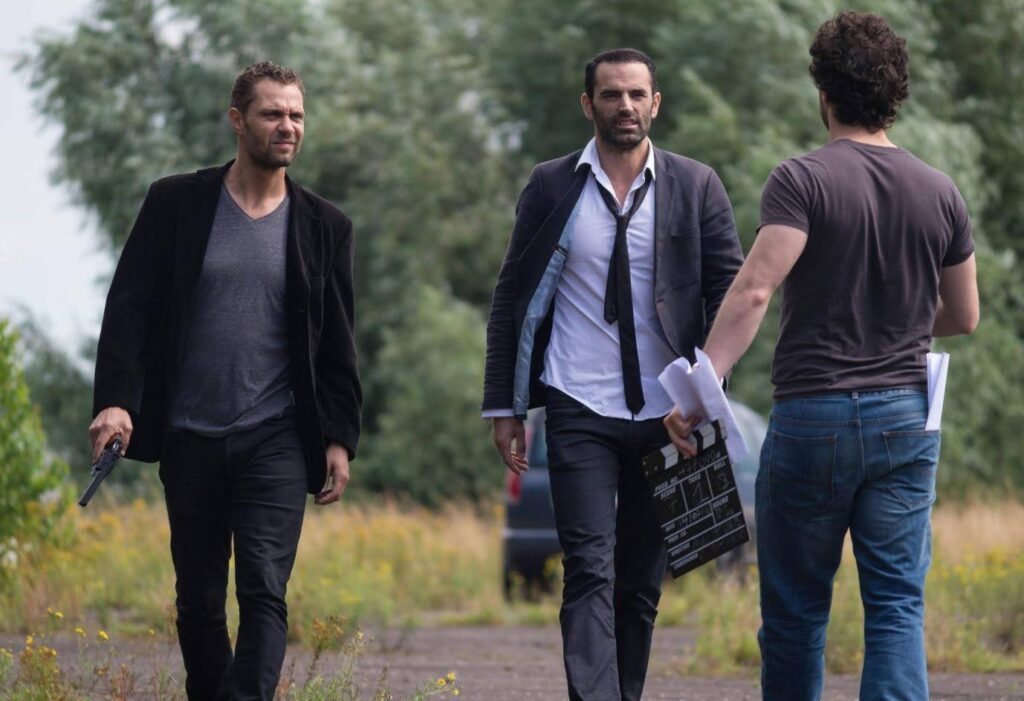
Production Designers and Set Decorators
A shooting script lets the designers know what they must build or dress on set, be in a futuristic lab, a 1920s speakeasy, or a suburban kitchen.
Editors
Even during shooting, editors may begin assembling scenes. The transitions and cues in the shooting script guide early cuts and timing.
Examples of Spec Scripts from Film & TV
Let’s see a shooting script or two in action!
Momento (2000) | Christopher Nolan
We immediately know this is a shooting script from the title page which lists the revision sets and the corresponding page numbers for Memento.
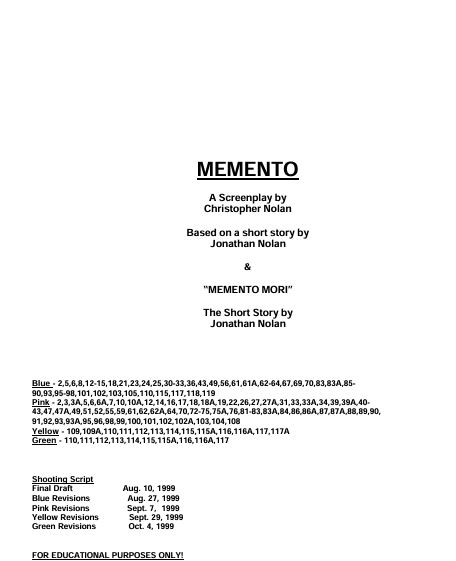
On page 107, we see some of the production notes of the shooting script in action. Notably the annotations “BLACK AND WHITE SEQUENCE” and “<<IN COLOUR>> (POST) to indicate how the scene should look to the editor.
Note how the script uses capitals for key props, sounds, and movements, such as BROKEN FLOORBOARD, THRASHES, and GURGLING.
Notice that the script numbers each scene clearly in the left and right margins.
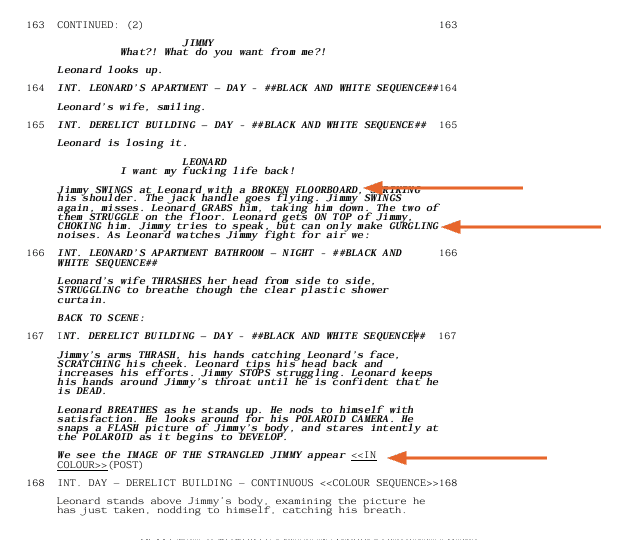
Die Hard (1989) | Jeb Stuart/Steven E. DeSouza
The shooting script for Die Hard shows us how the writer and director include camera directions. Here, in the first half of the script, we see the director using camera directions and notes to frame the action as McClane pushes Tony’s body into the elevator.
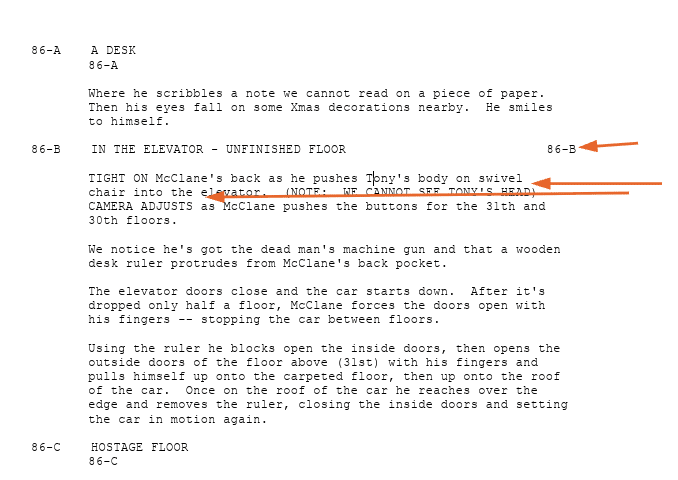
Notice scenes 86-A, 86-B, and 86-C. The writers or director added these after the scene numbers were finalized, perhaps to include further detail in scene 86.
The Avengers (2012) | Joss Whedon
The shooting script for The Avengers uses camera directions to indicate movement to the director, just like in this early scene:
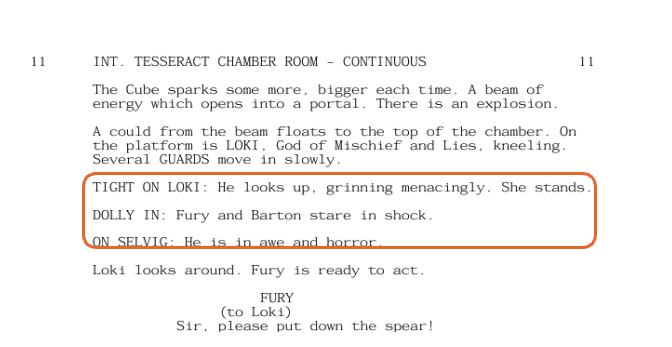
Here, screenwriter Joss Whedon has used TIGHT ON, DOLLY IN, and ON camera directions to focus the production crew’s attention on these images which are key to the character Loki’s introduction to the audience.
Camera directions like this in a shooting script ensure the entire crew are on the same page.
Go (1998) | John August
Go is a great example of where new scenes have been added once scene numbering has been finalized. On page 4, we see scene 6 has been OMITTED and 6A has replaced it. This makes it clear to the production crew that a change has been made without interrupting the finalized scene numbering.
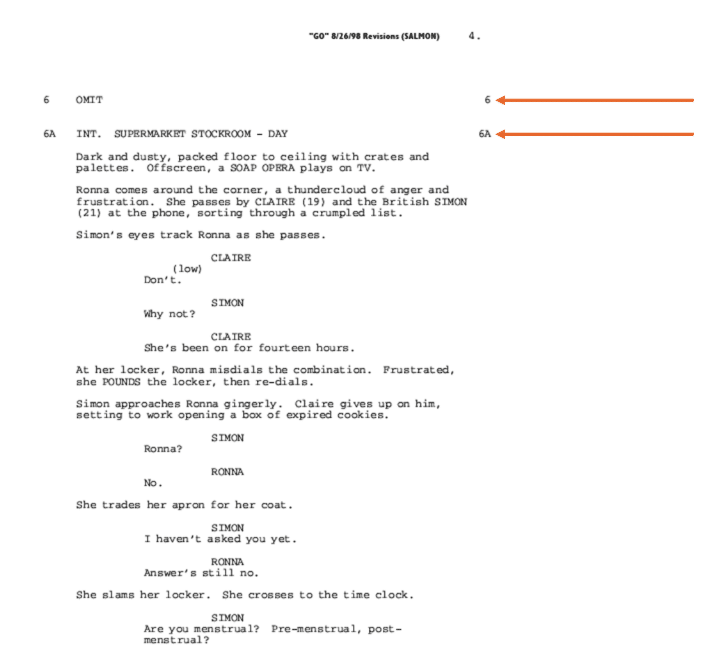
For more shooting script examples, check out the Writers Guild Foundation library.
How Celtx Helps Format for Production
Many screenwriters are moving into producing their own work, which is wonderful!
If you’re one of those writers-turned-producers preparing for the big shoot, Celtx is here to help! Our powerful features help simplify your process and break your script down.
These features include:
- Automatic scene numbering so you don’t have to track them manually.
- Storyboarding tools to plan your visual sequences.
- Production Catalog to manage props, costumes, cast, and more
- Revision Tracking with color-coded page generation
- Collaboration Tools for working with fellow writers as well as producers, directors and other crew members
While our screenwriting software is the best around, we’re also there to help you with the practical transition from storyteller to filmmaker, leaving you to focus on the important stuff – creating!
FAQ
Can I submit a shooting script to sell a movie idea?
We wouldn’t advise it. Always submit a spec script when trying to sell your screenplay. Producers and studios only use shooting scripts after they buy or greenlight a script.
How do I convert a spec script into a shooting script?
Once producers select a script for production, the director or 1st AD will usually guide the process of converting the spec script into a shooting script, with input from the writer and DP. Specialized software can help format it correctly, like Celtx!
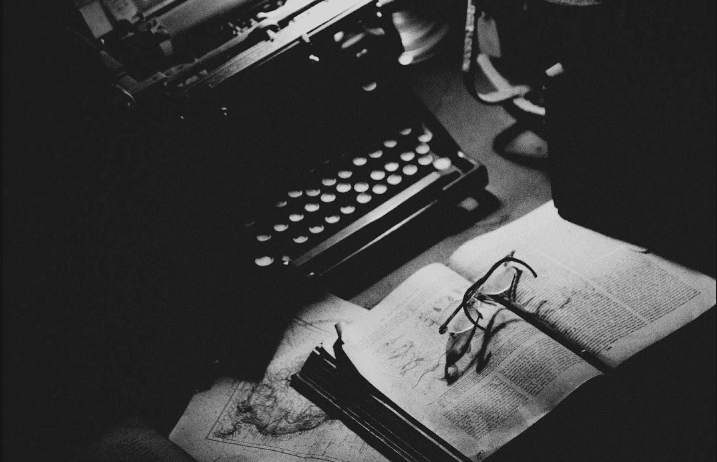
Do actors read the shooting script?
Yes, they do! They often also receive shortened versions (called ‘sides’) that contain only their scenes. However, understanding the full shooting script helps provide context and continuity to their performance.
Do all shooting scripts include camera directions?
Not always as some directors prefer to annotate their own copy of the script with short notes. However, most production-ready scripts include at least basic camera suggestions for scheduling and planning.
Are the colors in script revisions standard?
Yes, they are. The industry generally follows a standard sequence of colored pages, each marking a new revision:
- White (original)
- Blue
- Pink
- Yellow
- Green
- Goldenrod
- Buff
- Salmon
- Cherry
- Tan
- Gray
- Ivory
Conclusion
In the storytelling-to-production pipeline, the screenplay undergoes a transformation from a spec script to a shooting script. One inspires; the other executes.
Understanding this transition is crucial whether you’re writing, directing, producing, or even acting. A poorly formatted shooting script can confuse the crew, slow down production, and increase costs. On the other hand, a clean and professional shooting script can help everything run like clockwork.
So, whether you’re just starting out or gearing up for your next big project, remember this:
- Write your spec script to tell a great story.
- Use a shooting script to turn that story into reality.
And if you’re looking for tools to help bridge the gap, Celtx is a great place to start!
Focus on your story, not your formatting.
Let Celtx’s Script Editor automatically apply all industry rules while you focus on the story.
Up Next:

Creating a Shot List
Once you lock your shooting script, it’s time to start visual planning. Learn how to break down your scenes into a clear and effective shot list.
Click here to continue reading
